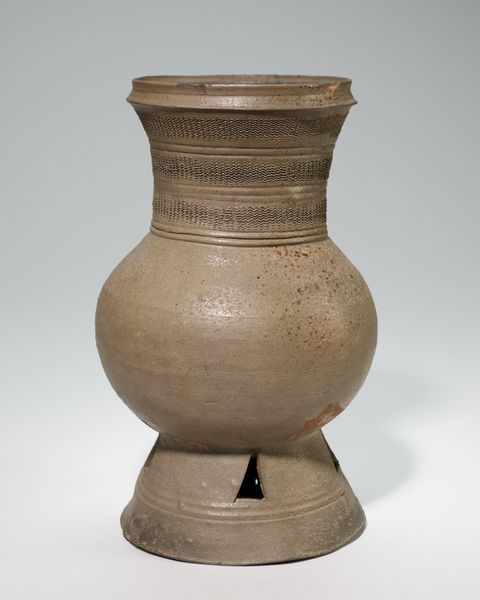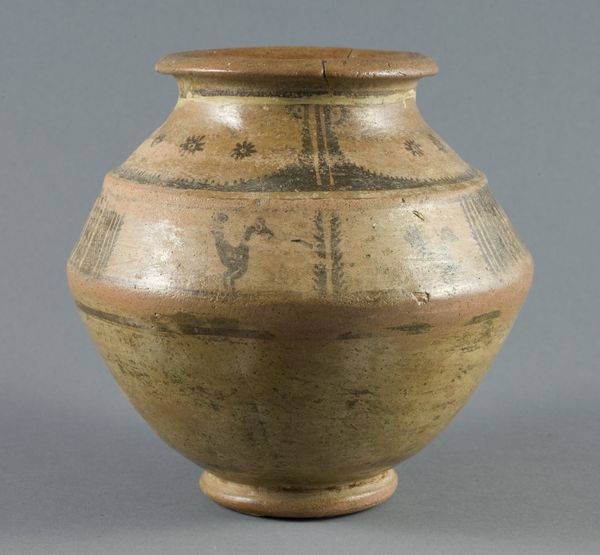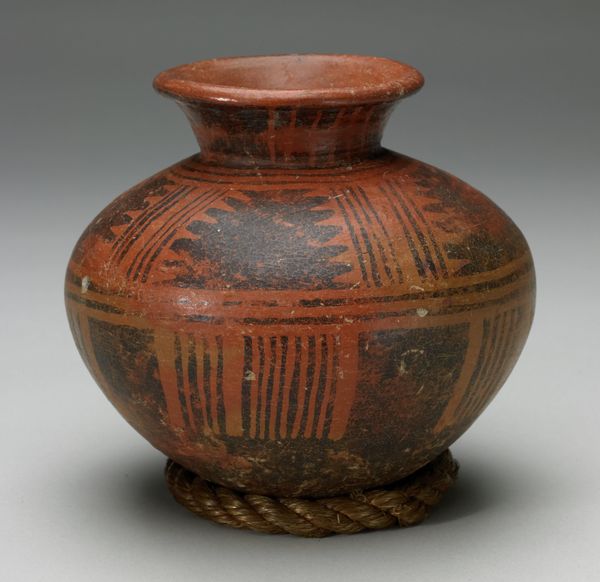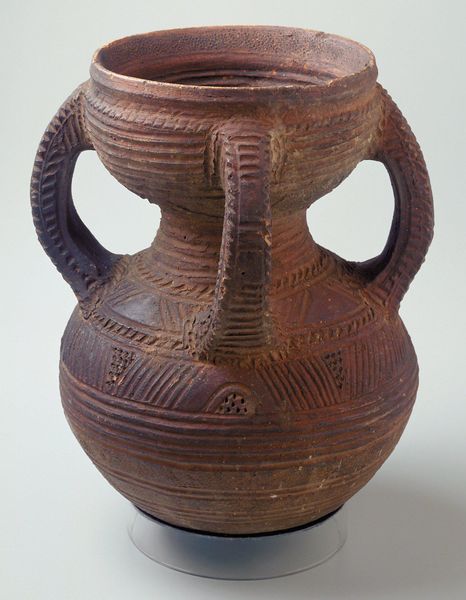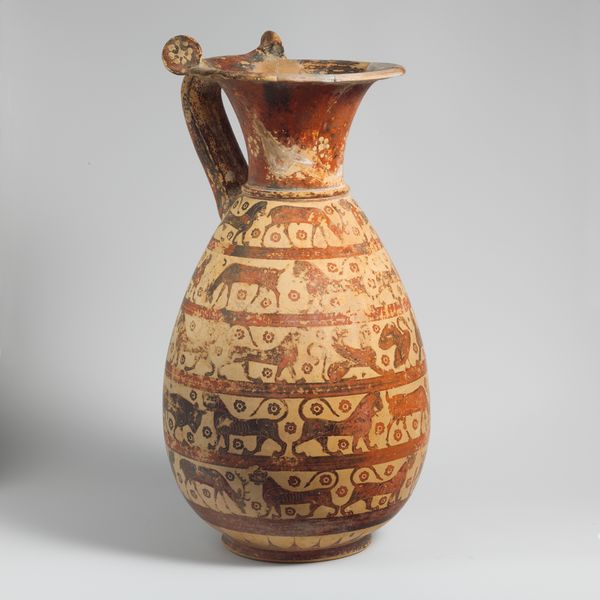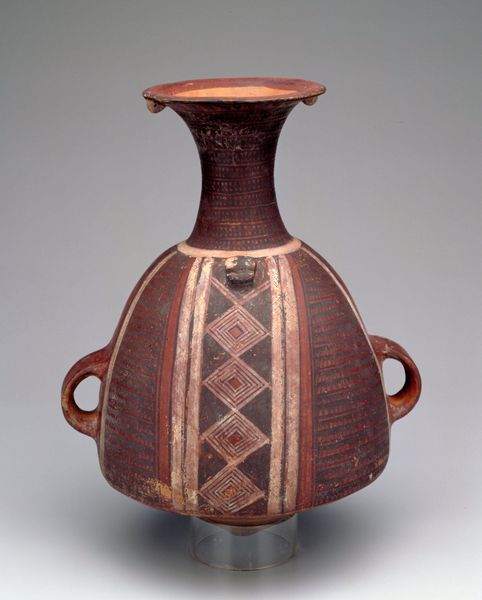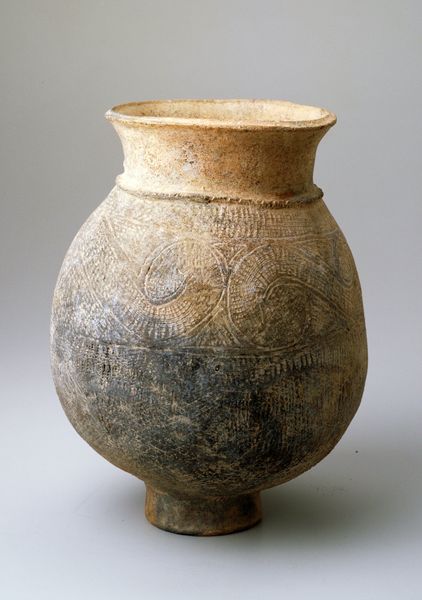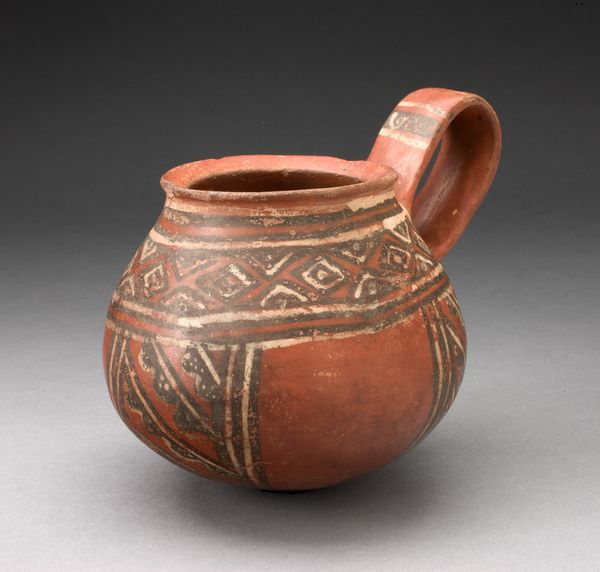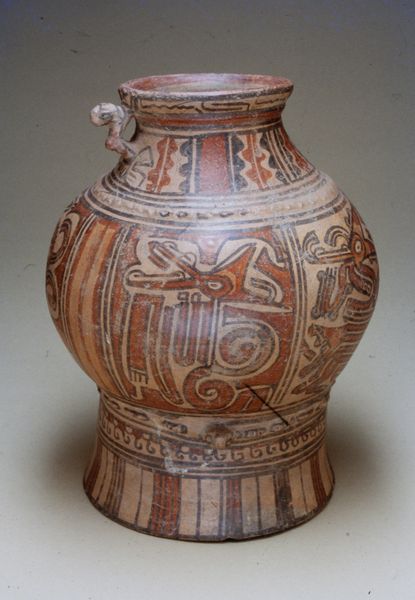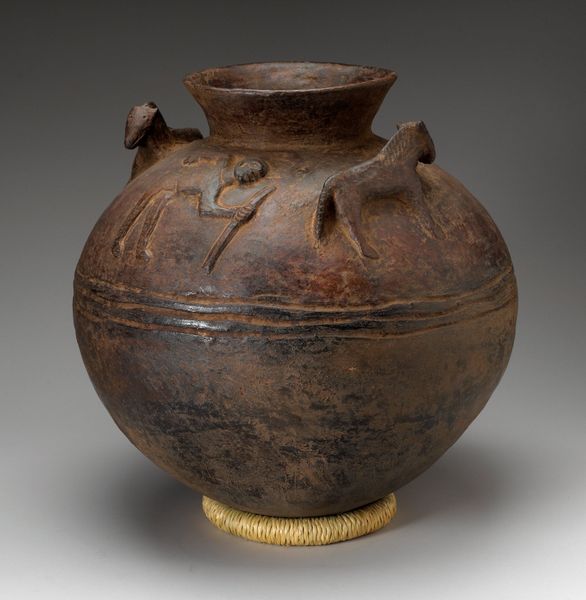
ceramic, earthenware, terracotta
#
african-art
#
ceramic
#
indigenism
#
earthenware
#
ceramic
#
earthenware
#
terracotta
Dimensions: 17 1/8 x 14 x 14 in. (43.5 x 35.56 x 35.56 cm)
Copyright: Public Domain
Curator: The artwork before us is simply entitled "Vessel," its date of creation unknown. It resides here at the Minneapolis Institute of Art, a compelling example of Nupe ceramic artistry. Editor: It strikes me as simultaneously ancient and timeless. This reddish-brown terracotta gives off such a grounding feeling. I’d almost expect cool water to materialize inside, it makes my fingers itch to touch it. Curator: Absolutely. Its construction using earthenware and terracotta speaks to a deep understanding of local materials and the labor-intensive processes involved in ceramic production. Consider the firing techniques, the surface decoration which has a clear sense of design—all connected to communal practices and possibly rituals. Editor: Do you think its utilitarian, or does the craftsmanship lift it above pure function? Those linear, geometric decorations almost hum with intent. Plus, those patterns wrapping around the body, it’s like the whole surface is a language whispering secrets. Curator: Indigenous aesthetics often blend practical function with cultural significance, right? Form follows function. And in this piece, the two elements really enhance each other. Each marking holds a unique history, adding layers of meaning connected with the maker's place and identity. Editor: I suppose in my mind, maybe this “Vessel” had seen so many sunsets, so many sunrises. It becomes more than just a clay pot, doesn’t it? I see this strong feeling that something important, or sacred, or maybe both happened here. It just brings this kind of feeling you get looking up at the stars or hearing stories. Curator: In considering it simply as a "vessel," we overlook so many vital considerations tied to this piece’s materiality, which has ties to local natural sources, production by hand, the artist's conceptual choices... Editor: It's a gentle echo from people and the place itself. Well, you’ve given me plenty to ponder about how something simple can feel like so much more, haven't you? Curator: Indeed. Seeing art from diverse perspectives shows that a material analysis is also the chance to understand the artwork on multiple different levels.
Comments
No comments
Be the first to comment and join the conversation on the ultimate creative platform.
